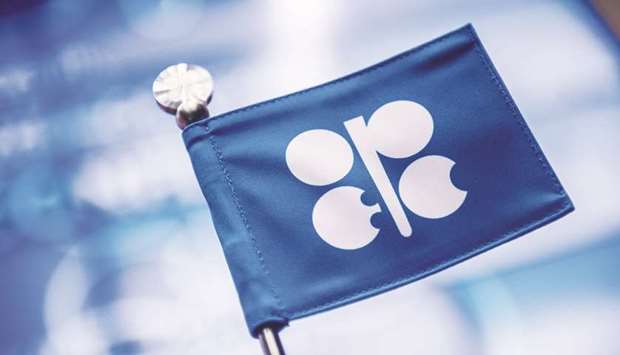Opec is discussing a relatively modest production increase before its meeting in Vienna this week, an attempt to bridge the gap between Russia’s push for a big rise and Iran’s insistence that no change is needed.
While a compromise may be necessary to overcome vocal opposition from Tehran, Baghdad and Caracas, it could mean the resulting supply boost is smaller than oil traders – or indeed the US President Donald Trump – had been anticipating. Crude prices rallied in early London trade yesterday after two weeks of losses, trading near $74 a barrel.
Members of the Organization of Petroleum Exporting Countries are discussing an agreement that delivers 300,000 bpd to 600,000 bpd of additional oil supply to global markets over the next few months, according to people briefed on the talks. If agreed, that would be smaller than the 1.5mn-bpd quota increase that Russia has proposed.
“People probably feared 1.5mn bpd,” but the current talk indicates a smaller increase, said Torbjorn Kjus, chief oil analyst at DNB ASA. “It’s going to be the most interesting meeting for a while.”
The push by some Opec members to boost production reflects both internal and external pressures. Within the group, Venezuela’s oil output has collapsed to the lowest since the 1950s due to industry mismanagement, and Iran’s petroleum exports are subject to renewed US sanctions. These twin crises could remove 1.5mn bpd from the market by next year, while also giving those two nations an incentive to block any efforts to fill the gap.
From outside, Trump is attacking the group on Twitter for “artificially inflating prices” and lobbying hard behind the scenes for a significant production increase. Russia, by far the largest non-member to join the Opec’s cuts agreement, has said it would be happy with lower crude prices and appears keen to start up new fields.
In the run-up to meetings of Opec and its allies in Vienna this week, several nations have floated plans for production increases, but no consensus has emerged for what’s likely to be a fractious meeting.
Opec officials are also working on putting the co-operation between the group, Russia and other oil producers – the so-called Opec+ group currently comprising 24 nations – on a permanent footing. That would be a major diplomatic breakthrough for Riyadh and Moscow after just two years of co-operation on oil policy.
The prospect of binding Russia, the world’s largest exporter after Saudi Arabia, more closely to Opec might help persuade Iran and Venezuela to back higher production in the second half of the year.
While Iran said on Sunday it’s opposed to any increase to current quotas, a number of other countries are optimistic that a compromise can be reached allowing a relatively modest hike, the people said, asking not to be named discussing private conversations.
Russia has said the total increase in the group’s daily quota should be as much 1.5mn barrels. If allocated proportionally among all members of the group, only about two-thirds of that volume is likely to flow to the market because countries including Venezuela and Mexico are unable to raise output.
The increase of 300,000 bpd to 600,000 bpd – above the current Opec+ production of about 32mn bpd – is a less theoretical number. It would be a real increase in production from those countries with spare capacity including Saudi Arabia, Russia and the UAE. Some Opec members back increasing output by the lower end of the 300,000 bpd to 600,000 bpd range, one of the people said.
Analysts at Societe Generale SA predicted a difficult Opec meeting, but ultimately a deal along the lines of what’s currently being discussed.

An Opec branded flag sits on a table ahead of the group’s meeting in Vienna, Austria (file). Opec is discussing a relatively modest production increase before its meeting in Vienna this week, an attempt to bridge the gap between Russia’s push for a big rise and Iran’s insistence that no change is needed.


